Itchin’ for a chicken!
Stephanie asked a great question just the other day and I bumped this topic to the top of my “gotta blog this” list immediately. What kind of chickens should we get and what basics do we need to know?”
Chickens are the perfect starter livestock for any hobby farm, homestead, and even urban backyards. I get the following questions a lot about chickens and am so excited to share what has and hasn’t worked for us…
- What is the best kind to get
- What basics do I need from the start
- Where is the best place to get my chickens
What is the best kind to get? Chicken breeds/types are a lot like dog breeds/types. No matter what the breed is known for there will always be exceptions and a lot of your outcome depends on how the animal is raised. Basically, you need to ask yourself, “Why do I want these chickens?” and that will determine what type you get.
- Do I want great egg layers?
- Do you want meat birds (dinner table)
- Do I want dual purpose (decent egg layers but also good for butchering)
- Do I want good free rangers/pest control
- Do I have extreme winters/summers
- Do I want my kids (and me) to be able to easily handle them?
- Do I want certain color eggs (brown, white, blue, green, pink etc.)
- Do I want quick egg layers (chickens can start laying anywhere from 17 to more than 26 weeks old)
- Do I want heritage breeds or hybrids?
This may seem a bit overwhelming and an awful lot of questions to just get a couple chickens but it cetainly helps guide one in the purchase of the best flock.
What is the best kind to get? I absolutely have preferences on breeds based on what we have had. At one time I kept a flock of over 200 chickens which had the freedom to roam the entire hobby farm (including our front porch which did not make my husband and kids very happy). We had 23 different breeds of chickens and they all had their pluses and minuses but one breed certainly stood out amongst the others. The great cochin! We have had bantam (miniature version) cochins, standard cochins, and even frizzle cochins (their feathers are all frizzled and stand out on end) and I have loved them all for their gentleness, great egg production, ability to withstand cold and hot temperatures, beautiful looks, and great mama skills when we wanted to hatch out some chicks.
Some other great all around chickens for any type of environment are the orphington, brahma, australorp, cornish, polish, ISA browns, and golden comets, Rhode Island whites, Plymouth Rock, and New Hampshires.
We love the look and color of eggs (rich dark brown) we get from cuckoo marans but I have to say these ladies are not very friendly. We also had a Cuckoo Maran rooster, Stanley, who was pure evil. He would even chase our German Shepherds around the farm, horrible guy. The boys wouldn’t go out the door when Stanley was out. He got his own pen because we needed him to raise other cuckoo marans from our hens but I really really really did not like him. Needless to say I was not all that sad the day old Stanley kicked the bucket however I was scared to death to go in the pen to get his body to bury because I thought he might be faking it to lure me in to attack me.
On the flip side there was Meathead, the most amazing (and HUGE) rooster you could ever find. He even visited grade school classes for kids to learn about chickens and hobby farming. He loved to be held and everyone loved him. Sadly Meathead passed away last fall and he will serioulsy be missed!
Next item to consider is whether you want:
- chicks (male and female)
- pullets (female less than 1 year old)
- cockerels (roosters less than 1 year old)
- full grown hens
- full grown roosters
I’ve always preferred chicks because they are so darn cute and we could raise them up accustomed to being handled and returning to their coop at dusk. In spring you can get chicks from many feed/farm stores (around here it’s Tractor Supply Company and Rural King), mail order (my favorite is Murray McMurray Hatchery, link below), and from local breeders (check out Craigslist or local farmers).
What basics do I need from the start? This depends on what age you get.
Full grown egg laying chickens:
- Coop or hen house with nest boxes
- feeder
- waterer
- feed (at least initially so you can entice them to return to the coop each night if they are free ranging. Make sure it is NOT “meat bird” feed if you are raising egg laying or dual purpose breeds), protected run (depending on predator level and which, if any, livestock guardians you have) and chicken first aid kit. Pretty easy right? Yup, which is why they make great starter critters for any homestead.
- If your birds do not have access to dirt ( I highly encourage as much access to “foraging as possible) then you need to provide grit for their digestion. A small bowl or feeder of it is sufficient as they will eat what they need.
- Calcium of some sort. Some people provide this with oyster shell (we do) given freely as the grit would be. Others crush up egg shells and give it to them (we also do this).
Pullets/Cockerels: All of the same things above except you will not want to feed the egg laying feed. Instead get the starter/grower or grower/finisher feed depending on age of pullets. They will probably not be free ranging at this age (due to their size they make too easy of targets for predators) so you will be giving them more feed than full grown, free ranging chickens.
Chicks:
- Brooder of some sort. There are a million ideas on the internet for “homemade brooders” that range from super simple to complex. In the past we have used a baby pool with square mesh wire surrounding it or refrigerator boxes laid down with the “top” cut out. We now use a big stock tank with high walls similar to what you see the chicks in at the feed stores. It’s a bit of upfront investment but if you plan on having new chicks again it is worth it. If you only have a couple chicks feel free to make something or use boxes.
- Brooder light. Yes you need this even if it’s summer. Chicks need to be kept warm so you will have to adjust the height to get it just right. The chicks will let you know.
If they are all huddled directly under the light most of the time they are cold, lower it. If they are most often in the far depths of the far corners trying to get away from the light it is too hot, raise it.
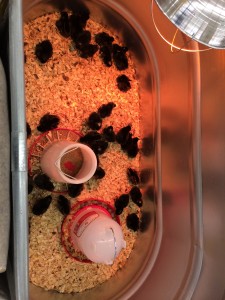
- PERFECT!
3. Waterer. Do not use a bowl of water as they will probably tip it over and/or drown in it. Fresh water every day is super important for chicks. When you first get them home add 1 TBS of sugar per gallon of water and make it slightly warm the first time.
4. Feeder. The round ones are great (pictured above). I have often found that my chicks get their food super dirty and icky with the long trough type.
5. Feed. You will need chick feed (starter). DO NOT Get the meat bird starter (it is designed to grow chickens super fast to butcher sooner and that will be bad if your chicks are used for egg laying or dual purpose). You can get the medicated feed if your chicks were not immunized (Marek’s Disease) but only feed it for 1 to 2 weeks. You can also get feed with antibiotics but I have found I don’t need that as long as I keep the brooder clean and water refreshed daily. When we hatch out our chicks here on the farm I give the medicated feed (for Marek’s Disease) but if I get them from a hatchery I have them immunized there before shipment.
6. Grit. If your chickens do not yet have access to the outdoors (dirt) put a bowl or feeder of grit out for them. THey will eat it as they need it to aid in their digestion.
7. Bedding. If they came from a hatchery or someone’s incubator at first you will want to have paper towels down for the chicks (newspaper becomes slick when wet and they could easily hurt their legs). You can put hem on top of wood chips or just have it down on the floor of your brooder (I suggest the latter). Change this paper towel out daily. If you put them on wood chips when they have not been accustomed to them they often mistake them for food, eat them, get impacted crops, and could die. If they came from a feed store you can put them directly on wood shavings or chips as they are accustomed to them and shouldn’t eat them
8. Chicken first aid kit. I will have more on this soon as I am working on a blog post all about general chick/chicken health and ailments. Basically you want scissors, antibiotic ointment, dressings, pressure tape, gloves, magnifying glass, and thermometer.
Last but not least, Where is the best place to get my chickens? I’ve bought them locally (breeders, farmers, fed store), ordered them, rescued them from inhumane conditions,and hatched chicks here at The Shepherd Hobby Farm. I love getting rare breeds and funny breeds from a hatchery but cannot help myslef in spring when I go into the feed store so I end up bringing a few home from there as well every spring. My all time favorite though is hatching them here at the farm… if you are ever able to do it I highly recommend hatching your own out.
Hey maybe I should start an “incubator rental” business, so fun!
When you get them from the feed store choose chicks that are moving around and curious. You may be tempted to “rescue” that one huddled by herself in the corner but you are setting yourself up for more work and probable heartbreak if she doesn’t make it. “Straight Run” means they haven’t been sexed (male and female) and you have no idea what you are going to get (hens or roosters). Pullets are female and cockerels are males as we stated before (though I’ve never seen a feed store sell just cockerels). You do NOT need a rooster for hens to lay eggs. Roosters are great but that is for a whole nother blog post!
Quick links that will help even the most seasoned chicken enthusiast!
Murray McMurray Hatchery: http://www.mcmurrayhatchery.com/index.html
Mother Earth News did an interesting survey all about different breeds and chicken management techniques. The results can be seen here… https://www.surveymonkey.com/sr.aspx?sm=Ng1SFU0PmWjHUT7ofHi5hKvyLiYkduQuX0GzIJnw6z0_3d
Another tool from Mother Earth News is their “Hatchery Finder.” You type in what you are looking for and it comes up with the mail order hatcheries that have what you want, cool!
http://www.motherearthnews.com/find-chickens-poultry-hatchery.aspx
Questions? Comments? Ideas? Pics of your poultry friends? Let me hear it and see them, post here in the comments section and feel free to share our site!

 Follow
Follow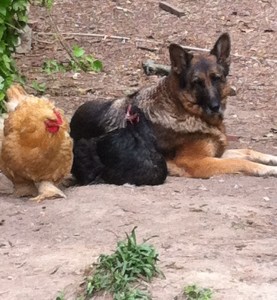
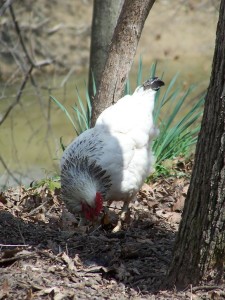
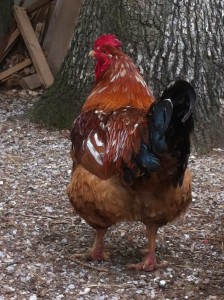
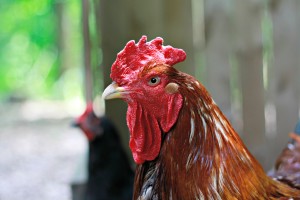
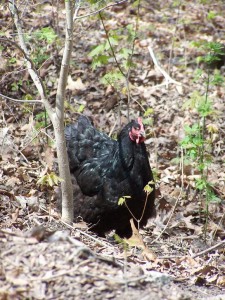
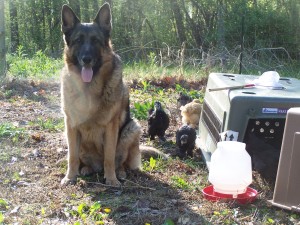

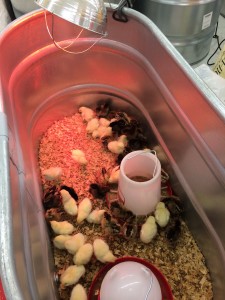
I think we going to buy a huge clear storage tub (from Lowes or Walmart) and create an indoor brooder (with a lamp) until they are older/larger. I’ve read anywhere from 4-6 weeks. Is that right? Then they’ll go into the coop. The brooder though….if we get 6-8 chicks from Rural King will they be immunized and ready to go into a brooder with nothing in the bottom except paper towels (which I change out once a day). Along with chick size water and food feeders, right? Also, I’m wanting to keep these organic. Do you recommend a type of chick feed I should use?
Stephanie, Yes, storage tub, awesome idea! It doesn’t even have to be clear. I did that with a couple different smaller batches of chicks and it worked beautifully. Just watch that the heat lamp bulb doesn’t touch the plastic, it gets very hot.
You are also correct that 4-6 weeks is generally a good timeframe to go by. It’s a good idea to move the heat lamp to the coop when you move them in at first unless it’s super warm day and night.
Rural King (as is the case with most feed/farm stores) does not immunize their chicks for anything but sometimes they have them immunized at the hatchery they buy them from. This varies with every shipment so you need to ask if they have been vaccinated and if so, which vaccination was given (Marek’s Diseases, coccidiosis, etc.). For example, at this moment (March 11, 2014) Rural King in Evansville, Indiana, has some chicks that are iummunized and some that are not. If your chick has been immunized for coccidiosis DO NOT give medicated feed as this will render the chick/chicken open to contracting coccidiosis. If your chick was immunized for Marek’s Disease but not coccidiosis then it is fine to feed medicated feed.
That being said, it is not really necessary to use medicated feed at all, although some people prefer to use it as a sort of insurance policy. You can use regular, unmedicated starter feed. Chicks can live and grow without medication, but in that case their environments should be kept extra clean, since coccidia oocysts proliferate in wet environments. I have raised chicks with medicated feed and some without (the ones that are hen raised never get medicated feed because egg laying chickens should not eat it and mama hen would not listen to me when I told her “don’t eat your children’s dinner”).
If you get your chicks from Rural King they should already be accustomed to living and walking on wood shavings so no paper towels will be necessary as they should have learned not to eat the shavings and eat the chick feed.
Guess what, the marans (which I love the eggs from but have always been antisocial for us) are thought to be more diease resistant all around, go figure.
If you want to keep things organic the following recipe is a great one from The Elliott Homestead for adult chickens and they get their grains and ingredients from Azure Standard (has a drop here in Evansville and hundreds of other locations across the country).
Homemade Chicken Feed (organic, non-GMO, non-soy)
Note: The prices below reflect the price we pay through Azure Standard.
You will need:
– 12 cups organic, feeder oats (.34 cents/lb)
– 8 cups organic, soft white wheat (.38 cents/lb)
– 8 cups organic, hard red wheat (.26 cents/lb)
– 6 cups organic corn (.42 cents/lb)
– 4 cups organic lentils (.54 cents/lb)
– 4 cups organic split peas (.47 cents/lb)
– 2 cups organic flax seed (1.68/lb)
– 1 cup sesame seeds (2.27/lb)
– 3/4 cup kelp granules (3.25/lb)
– 2 tablespoons olive oil, coconut oil, or molasses
** Recipe from The Elliott Homestead
Mother Earth News also has a great tidbit about making your own chick feed though you will find the ingredients are very similar to the storebought chick feed that you can buy at any feed/farm store (Rural King, TSC, Farm & Fleet, etc.). Here is Mother Earth News info…
“You can mix your own baby chick feed by finely grinding grains and adding wheat germ, bran, sunflower seeds, powdered seaweed, alfalfa leaves and so on. The pint-size poultry must have adequate protein — 15 to 20 percent is desirable — in the form of powdered milk, fish meal, linseed meal and so on. Chicks must also have fine grit or sand to be able to digest their food. Ground oyster shell will provide calcium. Green food — comfrey, lettuce, chard, clover, etc. — should also be fed them. Feed the cheepers a little at a time as often as possible or give them free-choice with automatic or trough feeders. They won’t overeat, but may waste a lot of food when free-choice fed.
As the chicks grow, they can handle coarser grains and are gradually switched over to laying mash and hen scratch. Compare ingredients of various commercial mashes, looking at content analysis versus price. Different grains will vary in price from area to area and season to season. Usually it’s cheaper to buy grains separately and mix them yourself than to buy already mixed scratch. According to a table I found in an old poultry book, it takes about twenty-eight pounds of feed to raise a Rhode Island Red chick to age six months. A lighter breed chick (White Leghorn) will consume about 24 pounds” (Mother Earth News).
I have made my own chicken feed but usually buy the chick feed at the farm stores for the convenience factor.
Great questions Stephanie, can’t wait to see pics of your chicks and here how the first days go! Post updates for all of us to ooh and aah over 🙂
These are WONDERFUL tips and are a HUGE help to me. We’re looking for good egg layers (even in the colder months) & non aggressive (somewhat friendly) breeds that lay brown eggs. I guess marans are probably out because I’m seeing they typically are a more aggressive breed than others. Are cochins the best breed for what we’re looking for then or do they tend to stop laying in the colder months? I’m sure it’s hard to tell and it may be different for different breeds but I’ve seen that they eat an average of 1/4 lb of feed per adult bird for day? Is this accurate?
Stephanie,
Your best bet for all around brown egg layers that continue to lay in winter are cochins, black australorps, Ameraucana (admittedly not a brown egg layer…Easter egger that lays green, blue, or pink eggs… soooo cool!) , Welsummer, Delaware, Barred Plymouth Rock, New Hamshire Red, and definitely grab a golden comet if you can! THe only issue with cochins is that they do tend to go broody (want to sit on and hatch out eggs) easily. However, if you collect eggs twice a day then this won’t be a problem and I just love the breed so much. Yes, that is about right for the feed if you give no forage or extra scraps. We keep a “chicken bowl” in our kitchen into which plates get scraped and peelings etc. get dumped. Every day (or sometime a couple times a day) the chickens get this (we currently have a VERY small flock but will be getting chicks again very soon). When the chieckens are able to forage (even in a movable chicken “tractor” or pen) the feed comsumption goes down dramatically. Remember, if you feed nothing but chicken feed you will get eggs similar to those you can buy in the store. The real amazing egg taste comes from the goodies (bugs, plants, grass, etc.) that chickens find and eat when they forage.
Ooh, I forgot about grit! Chicks and chickens need grit (tiny rocks). If they forage or free range they will get it naturally but if they are in a brooder or a coop with no access to dirt you need to leave a little bowl or feeder of grit out for them. There is specific grit made smaller for chicks. I’ve edited by blog post above to include grit.
Great info here on socializing chicks…
http://www.backyardchickens.com/a/how-to-socialize-baby-chickens
Jhenna,
Have any tips to help our chickens beat this summer heat?
Thanks in Advance 🙂